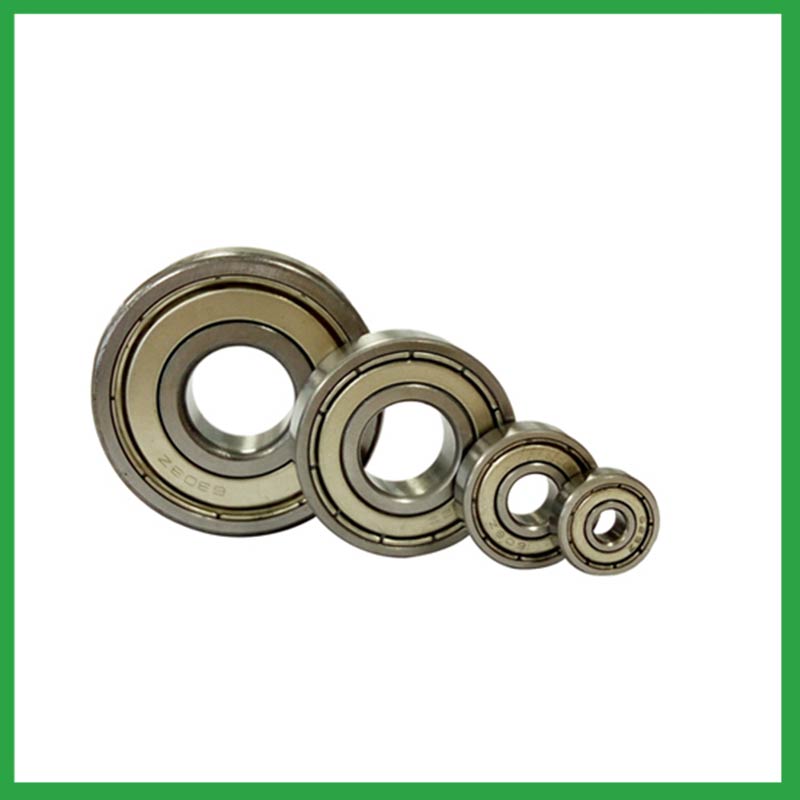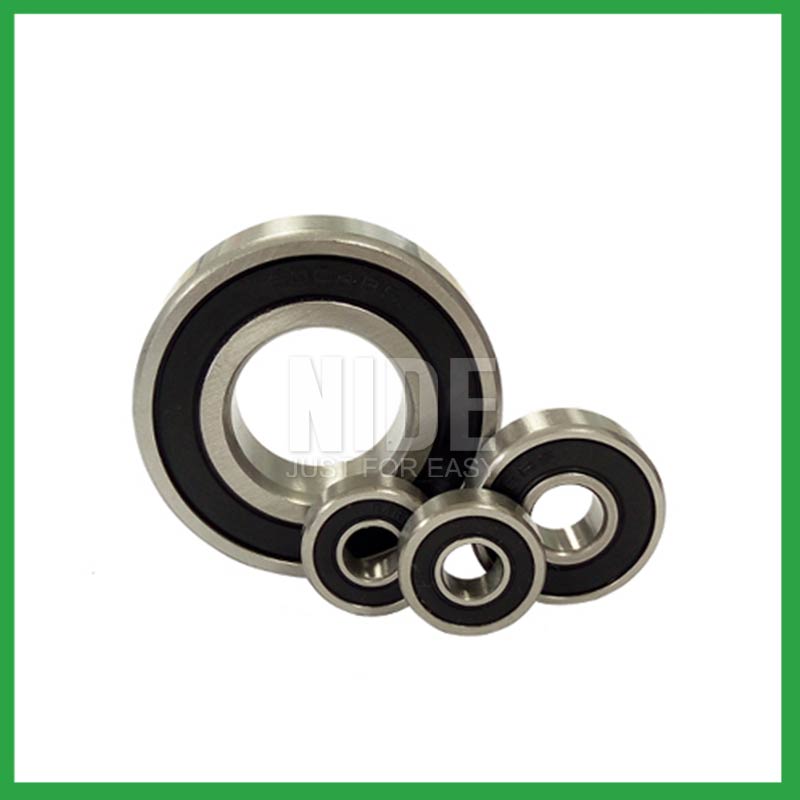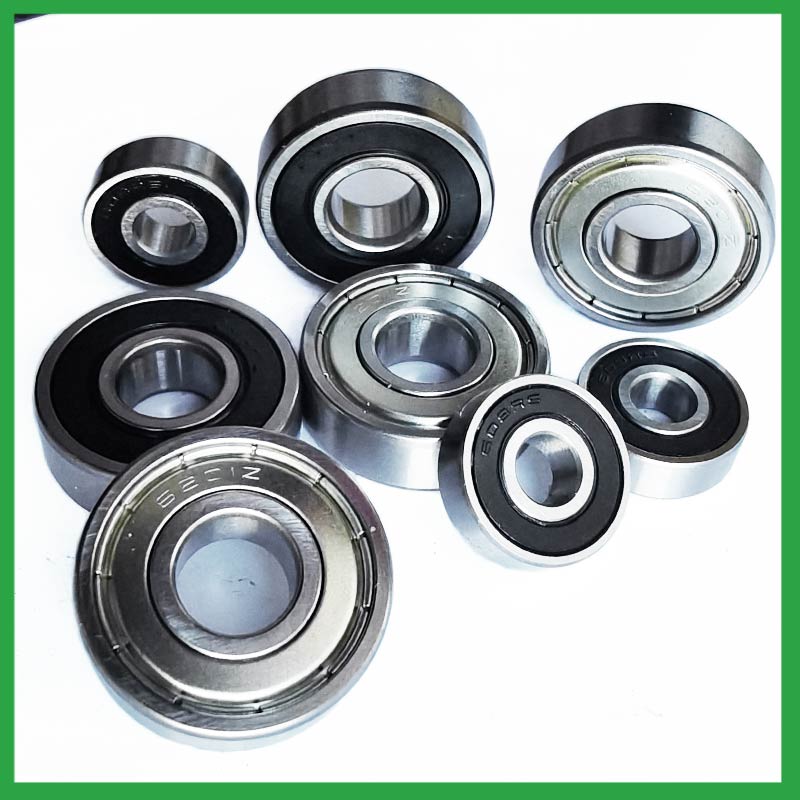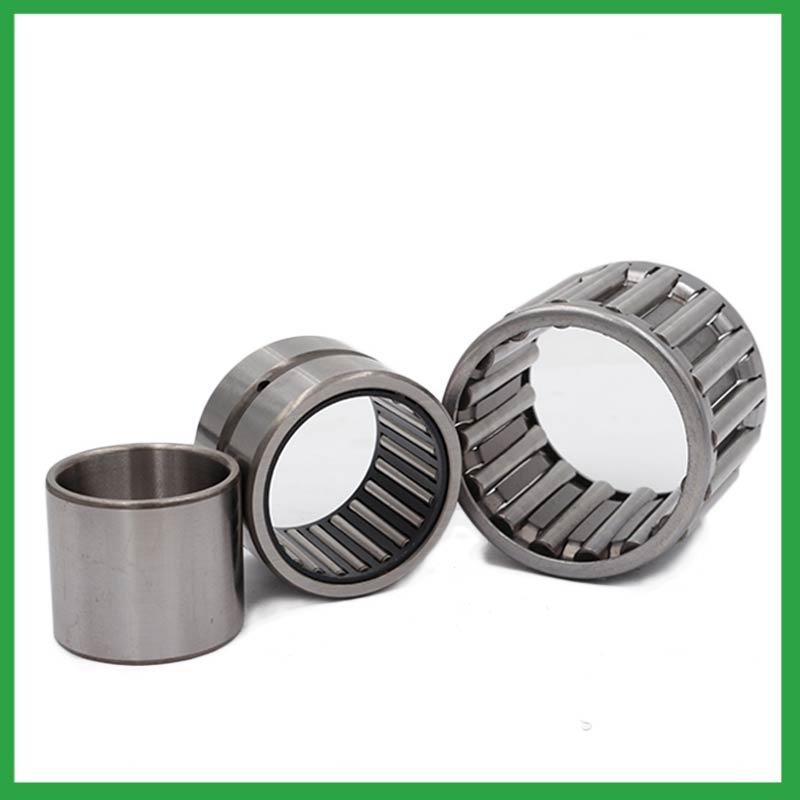PRODUCTS
CONTACT US
Ningbo Haishu Nide International Co., Ltd.
一一
· Contact person:Jack
· Mob/Whatspp/WeChat:0086-13738869026
· Email:emarketing@nide-group.com;marketing4@nide-group.com
· Add:14-5, East Kemao Center, No.100 Xiangyun Road, Hi-tech District, Ningbo, China.

Nide team could manufacture ball bearing as per customer’s drawing and samples.
If customer only has samples, we could also design drawing for our customer.
We also provide customized service.
Our ball bearing is widely applied the different industrials.
Established in 2010, Haishu Nide International is a modern enterprise specializing in the production of high-density bearings, with a factory area of over 9000 square meters. We have an excellent staff team, excellent production lines, and complete testing methods. Our main products are spherical roller bearings, cylindrical roller bearings, commutator,thermal protector,motor cover and lamination,fan,shaft,ball bearing,carbon brush, etc.
At present, our products have been sold to Europe,America,Africa and other regions, as well as more than 50 countries and regions such as Grenada,Yemen,Luxembourg. Strict quality control system, plus strong technical team allow us to offer the reliable machines to our customers. The philosophy of ” Service, Profession, Prompt, Innovation” help us to win the customer favor.

| Parameter | Information |
| Product Name | 1 2 bore ball bearing |
| Brand Name | Nide |
| Place of Origin | China |
| Type | Ball |
| Material | stainless steel, etc. |
| Sample | Avaible |
| Warranty | 3months-1year |
| Lubrication | Dry/ Oil |
| Application | small rotary motors,aviation engines, etc. |
| Port | Ningbo/Shanghai |
| Size(mm) | customize |
| Export Country | Argentina,Brazil,South Korea,Brunei,Armenia,Sri Lanka,Kiribati,Switzerland...etc |
| Export region | Oceania,Asia,Africa... |
| Certification | ISO 9001 Certification,CE-stator coil winding machine,CE-stator coil lacing machine,etc |
| Precision Rating | as per customer's requirement |
| Feature | Low Noise,Strong carrying capacity...etc |
| Packaging Details | Suitable for sea transportation |
| Color | Silver gray+customized |
| Seals Type | Rubber seals |
| Service | Prompt Delivery |
| Supply Ability | 100000-500000 Piece/Pieces per Month |
| Lead time (days) | 15-20 (To be negotiated) |
Please note: The above table data is for reference only. For specific information, please contact us.
1 2 bore ball bearing require thrust for installation, which can be achieved by using a combination ring made of steel sleeve and transmission rubber, or by using an adjustment plate to tighten the bolt to form a combination ring installation structure.
During the installation process, pollution from dirt and wear media should be prevented;
Temperature and humidity should be controlled to avoid excessive temperatures during startup and operation;
It should be operated and lubricated in the correct reverse direction to avoid unnecessary damage.
Ball bearings have many advantages, making them highly competitive in the market.
Firstly, they are very durable and have good wear performance, making their service life longer than many other types of bearings.
Secondly, they are easy to install and can provide low friction performance in various applications.
Thirdly, they require a relatively low level of maintenance, making them cost-effective.
In addition, compared to many other types of bearings, their purchase cost is relatively low, making them an economical choice.




1 2 bore ball bearing---FAQs Guide
2.How do different 1 2 bore ball bearing designs, such as deep groove, angular contact, or thrust bearings, cater to specific applications?
3.Can 1 2 bore ball bearing be used in both vertical and horizontal orientations?
4.Where can 1 2 bore ball bearing be used?
5.Are there ceramic 1 2 bore ball bearing designed for specific applications requiring high-temperature or corrosion resistance?
6.What are the considerations for selecting sealed or shielded 1 2 bore ball bearing to protect against contamination and retain lubrication?
7.As a 1 2 bore ball bearing manufacturer,Your product certifications?
8.About 1 2 bore ball bearing,Will you check the products before shipment?
9.Are there miniature 1 2 bore ball bearing designed for use in precision instruments and small-scale mechanisms?
10.What is the role of 1 2 bore ball bearing in reducing friction and energy loss in rotating machinery?
11.What are the common materials used in 1 2 bore ball bearing manufacturing?
1.Are there specific 1 2 bore ball bearing designed for applications in the aerospace and aviation industries, and what standards do they adhere to?
Airframe control 1 2 bore ball bearing are specialized bearings tailored for aircraft structures, particularly control systems and surfaces. Designed for low-speed oscillatory applications, they offer precision and support, effectively managing misalignments and flight-induced stresses.
Airframe Control bearings are lightweight, corrosion-resistant, grease-lubricated, and are sealed on most occasions. They come in precision grades for running accuracy.
2.How do different 1 2 bore ball bearing designs, such as deep groove, angular contact, or thrust bearings, cater to specific applications?
Deep groove 1 2 bore ball bearing: Deep groove ball bearings are the most common type. They can handle both radial and axial loads. Angular contact ball bearings: Angular contact ball bearings have higher than average internal axial clearance. They can handle axial loads in one direction and moderate radial loads.
3.Can 1 2 bore ball bearing be used in both vertical and horizontal orientations?
Sleeve Bearings: Sleeve bearings, also known as plain bearings, employ a simple yet effective mechanism. A cylindrical sleeve separates the rotating shaft from the stationary portion of the bearing, reducing friction and enabling smooth rotation. Sleeve bearings are characterized by their quiet operation, cost-effectiveness, and suitability for horizontal mounting orientations.
Ball Bearings: Ball bearings introduce small metal balls between the moving parts, providing enhanced durability and reduced friction. This design allows for smoother and more efficient rotation, making ball bearings well-suited for high-performance applications and vertical installations.
4.Where can 1 2 bore ball bearing be used?
1 2 bore ball bearing are very versatile. They can be designed to withstand radial loads, axial loads and combined radial/axial loads at various operating speeds. These characteristics, combined with the relative cost and compactness of the design, give it universal appeal within the industry. Ball bearings are widely used in electric motors, gear reducers and pumps. Serving the automotive, home appliances, aerospace, oil and gas drilling, and mining sectors.
5.Are there ceramic 1 2 bore ball bearing designed for specific applications requiring high-temperature or corrosion resistance?
Ceramic 1 2 bore ball bearing are a special type of bearing made of ceramic materials, offering superior wear resistance, corrosion resistance, and high-temperature performance. They provide excellent performance in applications requiring high speeds, high temperatures, and resistance to corrosion.

6.What are the considerations for selecting sealed or shielded 1 2 bore ball bearing to protect against contamination and retain lubrication?
First, the environment in which your 1 2 bore ball bearing operate in can help you identify potential contaminants, allowing you to select your shields or seals accordingly. For example, shielded bearings have a gap that can allow finer contaminants or water from washdown applications to enter the bearing and get into the raceways.The challenge for sealing bearings is to seal the bearing by protecting the bearing from contaminants and running efficiencies.
7.As a 1 2 bore ball bearing manufacturer,Your product certifications?
ISO9001:2015 certificate,ISO 9001 Certification,CE-stator,etc.
8.About 1 2 bore ball bearing,Will you check the products before shipment?
Yes, We have a professional QC team. Products will be strictly inspection before shipment.
9.Are there miniature 1 2 bore ball bearing designed for use in precision instruments and small-scale mechanisms?
Miniature bearings, despite their small size, play a significant role in various industries and applications. These compact powerhouses, typically measuring less than one inch in outer diameter, offer exceptional precision, durability, and reliability. Miniature bearings find extensive use in precision instruments and robotics.
10.What is the role of 1 2 bore ball bearing in reducing friction and energy loss in rotating machinery?
1 2 bore ball bearing reduce friction by using smooth balls lubricated with oil or grease that freely roll between a smooth inner and outer surface. The main concept of the ball bearing is that objects that roll past each other produce less friction than if the objects were sliding against each other.

11.What are the common materials used in 1 2 bore ball bearing manufacturing?
Most 1 2 bore ball bearing are made of a type of steel known as high carbon chromium steel, often called chrome steel. This is used for reasons of cost and durability. Bearings are also made from other materials such as stainless steel, ceramics and plastic.

